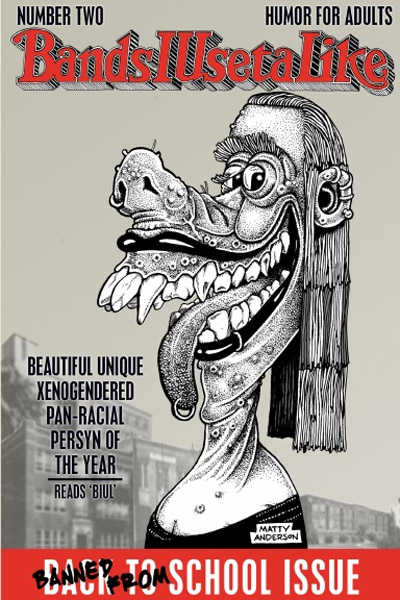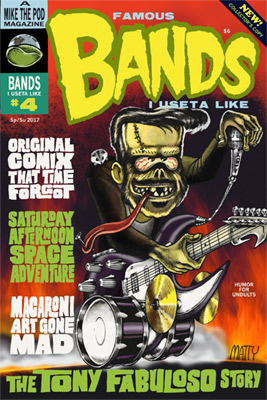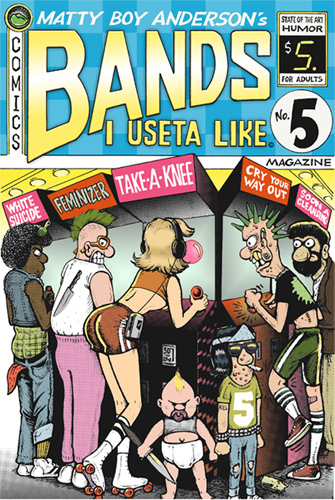It is impossible to get through a holiday season without watching Die Hard. Since its blockbuster release in 1988, this thrilling yet simple actioner- Bruce Willis against a gang of international thieves posing as terrorists to take over a skyscraper- has become a perennial favorite. Every so often another chapter of the Die Hard franchise emerges, attempting and failing to recapture the explosive magic of the first film. It can’t be done, and it’s not because Bruce Willis is now in his sixties.

Sly Stallone was over sixty when he made Rambo, which I’ve argued is as good a Rambo movie as can be made in the 21st century (I liked it a lot). And as much bitching as there was over a geriatric Indiana Jones in 2008, I’m astonished that the same audiences are literally lining up to see Han Solo played by an actor that’s over seventy. So you see, it’s not the age of the actor, it’s the way the character is presented that matters. The damage of three decades of censorship and political correctness has been done, and scripts with men like Indiana Jones and John McClane don’t get the green light anymore. Before you jump in and predict that Bruce Willis will be replaced with a girl, it already happened, in 2007’s Live Free or Die Hard.
Daughter Lucy enters the picture as a teenager, portrayed by Mary Elizabeth Winstead, a girl with the gift of being so easy to look at, the believability of anything coming out of her mouth has never been of import. She has been pulling this mojo on male viewers since 1999. Every few years she pops up in something mainstream, and guys get all gooey over her again. I’m betting that other girls hate her guts.
In any case, the latter-day Die Hards (that is, the ones after the “trilogy”) are hamstrung by a focus-group mindset that cripples the tension. The villains in the first movie are like human Decepticons- they get off on fooling their victims. This becomes a formula for successive episodes; para-militants pull off a heist or coup in disguise, cue Bruce Willis (or boring son) to battle the odds. But in the early going, the nasties were allowed to be nasty.
Die Hard works the best because the villains were permitted to be ruthless, and we as an audience were truly fearful of their unpredictability. For example, just before the credits roll (SPOILER ALERT if you are an unfrozen caveman), Alexander Godunov returns after being beaten, burned, and hung by the neck with a chain. After watching this former ballet dancer run amuck and kill for nearly two hours, you can almost believe it.

I kill you.
The setup that puts the film’s events into motion is steeped in old-school gender roles. John McClane is a NYC cop. His wife Holly, with whom he has two kids, has taken a job in LA. Inevitably, tensions arose, and Holly took the kids and left McClane in body and name. When Holly and John reunite in LA at the start of the movie, they start bickering literally within minutes.

These scenes with the battling McClanes are authentic in a way modern movies fail to be, because Willis is a marquee mug from a time when that meant vulnerability as well as grit, and Holly is played by Bonnie Bedelia, an honest-to-gosh real woman. Bedelia has always been pretty, but one of her real strengths is that she seems “gettable” (if not a bit too mom-like, which is appropriate here). It’s easy to put yourself in Willis’ shoes (or rather lack thereof) as a career lunk whose wife stepped over him on the ladder to success.
Earlier, when McClane got airsick on the flight to LA, a fellow passenger told him to take off his shoes upon arrival, and walk around making fists with his toes. This will not only alleviate his nausea, but it will establish brilliantly the plot device that Willis must fight barefoot for nearly the whole running time. All of us have trod upon sharp objects in our lives, and the sight of McClane’s lacerated tootsies is so realistic, it never fails to hit home.

OWWWW!!!!
Before this film, Bruce Willis was known as a comedic TV actor, and at unfortunate intervals, a singer called Bruno. He had just come off the atrocious dud Hudson Hawk, which he co-wrote with a songwriter friend. He brought real charm and humility to the role of John McClane, partly because of who he was at the time, and how limited his options were. This is why Willis’ film appearances have been increasingly dry and lackluster; the dude has no reason to strive anymore. People will pay to see him either way. (I forgot about Looper, which disproves what I just wrote.)
The mastermind of the villains is Hans Gruber, played by the brilliant Shakespearean actor Alan Rickman. Die Hard was Rickman’s first major film role, at forty years old. Hans Gruber is probably one of the greatest movie bad guys ever. He murders, he terrorizes, and he puts on an American accent that would fool anyone. It’s like watching a great white shark wearing an impeccably tailored suit to a feeding frenzy.

Gruber’s henchmen include the aforementioned Alexander Godunov, his equally blond brother, Vigo the Carpathian, a guy I thought was Huey Lewis, a guy I thought was Levar Burton, and Al Leong. You can be forgiven for thinking you’ve seen Al Leong before, because you have. He is a lifetime henchman. Aside from plum roles in Lethal Weapon, Big Trouble In Little China, and They Live, Leong played none other than Genghis Khan in Bill & Ted’s Excellent Adventure.

Al Leong rules. Also, this is as varied as a snack bar got in 1988, and we liked it.
Moral support is provided by Al Powell, a beat cop in the wrong place at the wrong time, played by the wonderful Reginald VelJohnson. He went on to play another cop on the sitcom Family Matters, from 1989 to 1998. Pretty much everyone conflates the two roles, figuring that after helping John McClane at Nakatomi Plaza, Al Powell went on to a life in the suburbs with his family, where he was routinely aggravated by a weird young lad named Steve Urkel.

The soundtrack to Die Hard is the work of Michael Kamen, who flourished in music both theatrical and popular over the 1990s. Kamen is the one who added orchestral lushness to the Eurythmics’ “Here Comes The Rain Again”. (Let’s not talk about Metallica’s S&M.) For Die Hard, Kamen utilizes tense jumbled bass-string stabs, and combined with a bell-stick and percussion, creates an incredibly tight atmosphere. The bells almost sound like the violent shaking of a fully-dressed Christmas tree, cementing the holiday feel and tinging it with anxiety. Later in the score, when the villains manage to open the vault, Kamen works in Beethoven’s triumphant “Ode To Joy”, which most audiences associate with Die Hard. This is another quality that future installments tried and failed to relive, using different classical pieces. A gigantic part of what dragged Die Hard With A Vengeance down was Kamen’s insertion of “When Johnny Comes Marching Home”. Beethoven’s piece works so well here because it mirrors the joy and posed sophistication of the villains. By the third installment, it was an obligation of the franchise.
In the year 1988, Americans celebrated Christmas without argument. It was an expected, familiar and enjoyable time of year. There were television specials about it. Sitcom characters acknowledged it. And you know what? Not everybody believed in it, but they enjoyed it anyway. It wasn’t even about Jesus Christ. It was about Santa Claus, and giving gifts. That was the primary bone of contention back then, whether it was about the fat man or JC.
Now, in 2015, Christmas is a declaration of war. Angry loners with agendas spread the rumor that it’s offensive, and oppressive. Regular Americans who’ve celebrated a tradition for decades are considered politically incorrect. The media tells us all about the good people we hurt by being what we always were, and suddenly we’re sitting at the table with loved ones feeling guilty. Well, not the older Americans, who actually fought for something in their lives. It’s no surprise to them what a pussy you are.
Can you not see how insidious that school of thought is? You can’t even watch A Christmas Story from 1984 without announcing caveats to all in attendance. No Chinese people find the “Deck The Halls” scene offensive. It’s always people who want others to feel bad, for something they can’t change. These are the same people who complain about the helpless pregnant woman in Die Hard, and the cleavage Bonnie Bedelia shows during a standoff with Hans Gruber.
I SPECIFICALLY recall a female critic ranting about this on the radio, in 1988. Women like that are the reason movies stink now. The scene in question is at 1:51:25, when Gruber shoves Holly aside. See for yourself. Your mom showed more skin at church socials.

Your mom has great tits, BTW.
What exactly do critics like this- of any gender or color- do to advance the medium of film? And women aren’t the entire problem, it’s the new order of “scolding schoolmarms”, who think that every movie should conform to their narrow, predictable mores. Thank god I’m not a blond with blue eyes, I’d never have a Star Wars protagonist to identify with again. Blue-eyed blondes are considered “undesirables” by the Hollywood elite. The easiest way to predict the method of Tinseltown movers and shakers? Find out what they look like. They will never work with anyone who looks the opposite. Those days are dead. It’s not about what you put on a screen anymore. Now it’s about what you don’t.
And even though everyone is acting like this is a mark of increased sophistication, it’s the same rejection of the last generation’s ideals that happens every 20 years. Meaning that this corny-ass era of political correctness and restriction will be plowed under in short order, by its polar opposite. Remember when Boy George and George Michael were superstars? How’d that all work out?
Because Bruce Willis and Bonnie Bedelia play man and wife, the suspense ratchets to insane levels when two people discover the McClanes have children; Hans Gruber, and an unctuous anchorman, Richard “Dick” Thornburgh. Thornburgh, played to perfection by William Atherton, appears here and in Die Harder, where he gets zapped by an old lady’s stun gun. (This was on a plane, by the way. Before 9/11 and Mohammed Atta, you could bring literally anything onto a commercial airliner.) Here, he earns boos and hisses by using his knowledge of the McClanes’ identities to harass their kids and housemaid, all to get the big story.

Thornburgh is just one of a nebula of colorful characters that emerge as the action unfolds. There is a pair of FBI agents, both named Johnson, played by Robert Davi and Grand L. Bush (beat that name, I dare you), who will resort to carnage to control the situation. The guitar-stealing kid that Ray Charles shot at in The Blues Brothers went straight and got a job as a limo driver (with great taste in music), providing transport, comic relief, and a necessary knockout punch. Hart Bochner portrays the most lovable sleazeball cokehead you could ask for, with an impeccable beard. The late great comedian Rick Ducommon pops out of a manhole and gets barked at by feds, when he’s only trying to help. He can shut the power down from here!

This lovable city worker later retired to The ‘Burbs.
The ever-dependable Mary Ellen Trainor turns up as a newswoman, and numerous scenes are stolen by Paul Gleason, as a monstrously incompetent Deputy Chief of Police. As soon as Gleason appears as Dwayne T. Robinson, prepare yourself. The more horrible the incident, the more inappropriate his comment will be. When a helicopter full of feds explodes in a fireball hundreds of feet above the ground, he pauses to appraise the horror, and calmly says,
“We’re gonna need some more FBI guys.”
That is a classic and hilarious tension breaker. And when Powell has to deal with him, he and Deputy Chief Robinson form a perfect comic relief team. Whenever things get too dark, we cut to Dumby & Smarty. Reginald VelJohnson’s delivery of the words “want a breath mint?” is so perfectly scathing, it’s no wonder he went on to a decade of success as a TV comedy dad.

Not all the bygone cultural aspects of Die Hard are positive ones. Cigarettes are used as visual shorthand throughout the film. My own aversion to tobacco aside, I regret the loss of this in movies. Here’s a short list of how cigarettes are used:
- As a respite for the hero.
- As an indication that the villains are foreign, and well-financed.
- As a way for the hero to draw the villain out of his disguise.
- As a way to make the hero look tough and cooler than shit.
Cancer sticks look great in this movie. Bruce Willis, bloodied and heavily armed and also smoking as he drops one-liners, is the height of manliness. He’s smoking for relief while battling incredible odds. That’s men’s magazine stuff.
But the promotion of tobacco is a very tricky issue now, and then of course there’s the cancer. You cannot shoot a movie with anyone smoking on set, even outdoors. Mad Men uses herbal cigarettes to accurately depict a time when even children were lighting up. It can be done, by anyone but the hero. Rent Ghostbusters. Notice any smoking in that one?
Die Hard could easily be called one of the top action films of all time, if not the top. John McTiernan’s direction is impeccable and sterling enough to make you forgive whatever he went to prison for. The dialogue is terse and unassailable. It’s a perfect artifact of a time when people truly loved movies, and making them. That’s why it never gets old.
Merry Christmas.












You must be logged in to post a comment.